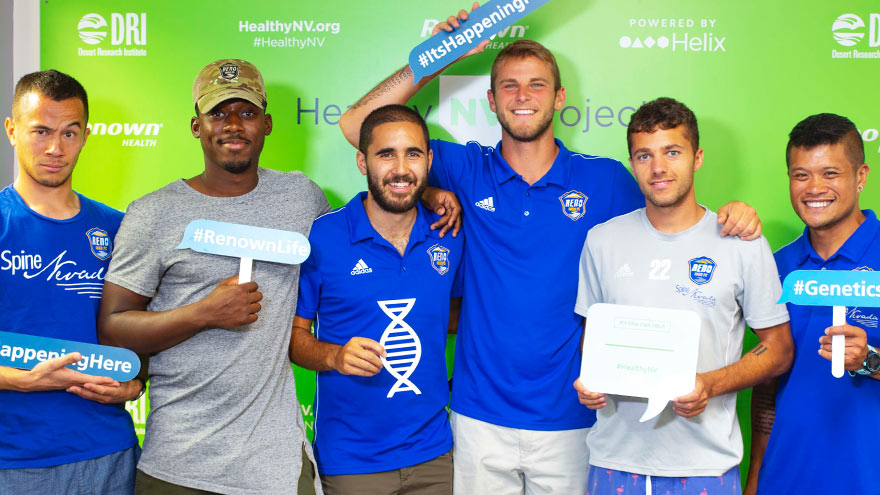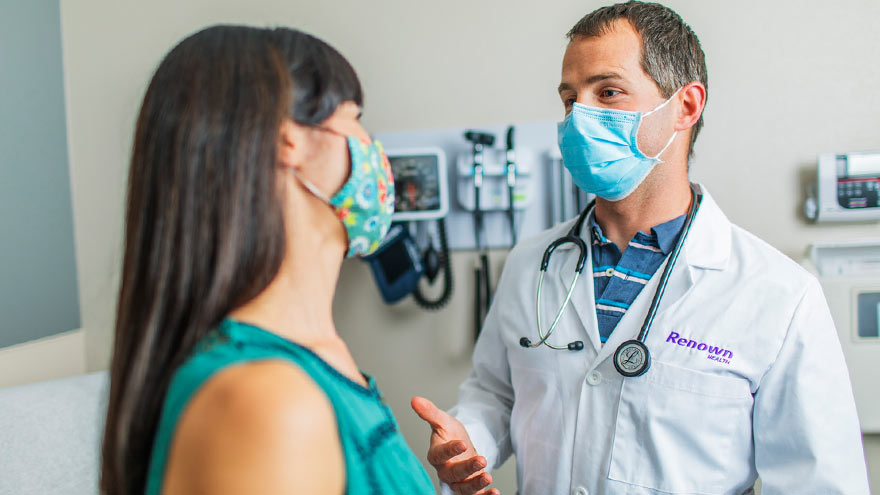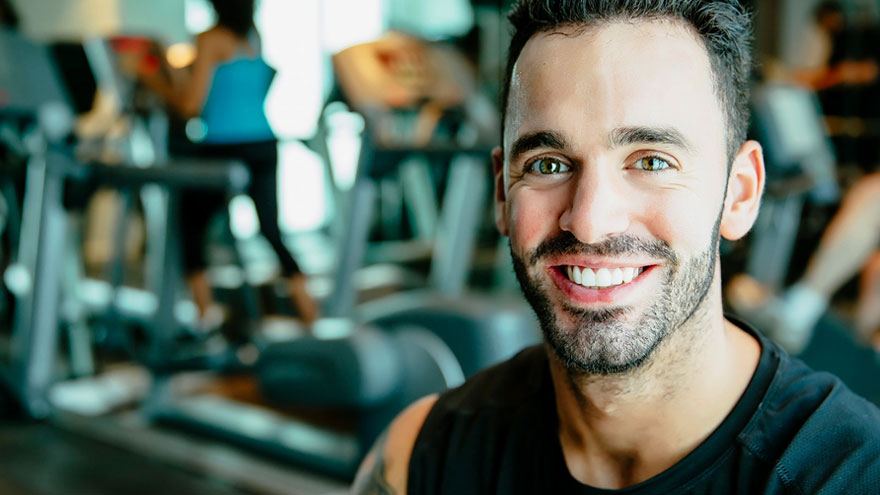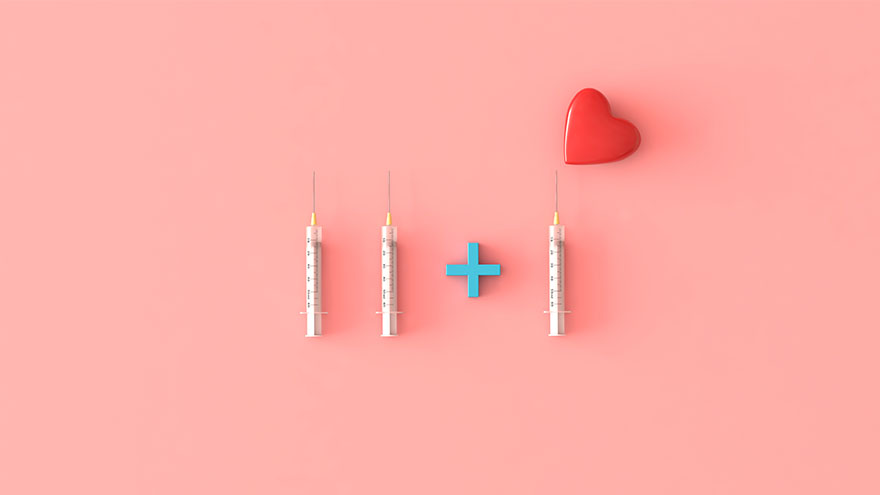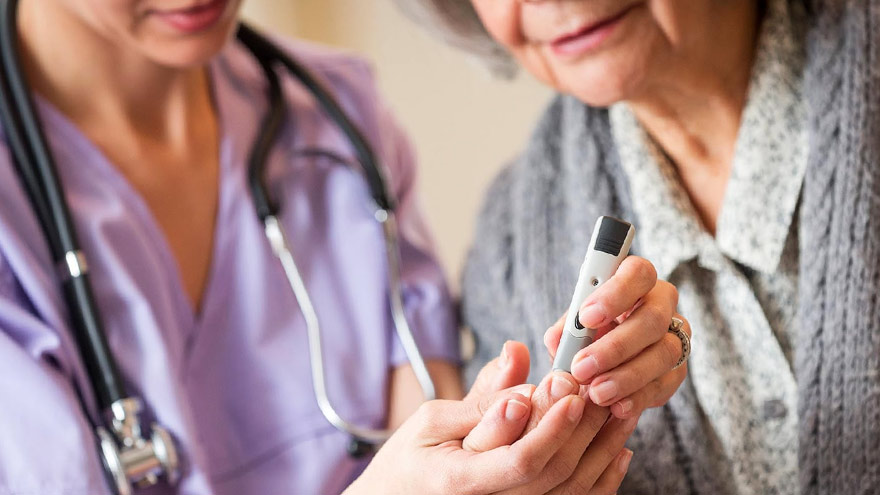Search
Results for 'what is an'
Clear-
Healthy Nevada Project: What We've Learned
As the Healthy Nevada Project expands to 50,000 study participants, researchers are sharing the health insights gleaned from the pilot phase of the project. Air pollution is a major health factor affecting northern Nevadans, according to data gathered by researchers in the pilot phase of the Healthy Nevada Project, one of the largest population health studies in the country. Today, the project — which began 18 months ago as a partnership between Renown Health and the Desert Research Institute — is expanding to add 40,000 additional participants bringing total enrollment to 50,000 Nevadans. “We are thrilled to share the first insights from our 10,000-person pilot phase and discuss how we will begin using those results to improve patient care,” says Anthony Slonim, M.D., Dr.PH., FACHE, president and CEO of Renown Health and president of Renown Institute for Health Innovation, a collaboration between Renown and DRI. Healthy Nevada Project Pilot Phase — and What Happens Next The pilot phase of the Healthy Nevada Project proved Nevadans are excited to know more about themselves and want to contribute to research that could improve health outcomes for the entire state. The pilot phase enrolled 10,000 participants in less than 48 hours and DNA sample collection from each participant was completed in just 69 working days. Based on pilot phase data, researchers have seen increased use of regional healthcare services correlated with fluctuations in air quality and so-called “bad air events” such as wildfires and atmospheric inversions. In phase two, Renown IHI will evaluate possible links between genetics and increased susceptibility to respiratory ailments. Study researchers also announced care providers and scientists will begin working on a number of clinical programs and scientific studies focused specifically on Washoe County’s high age-adjusted death rates for heart disease, cancer and chronic lower respiratory disease. Collectively, these conditions among local residents stand at 33 percent above the national rate. In the coming months, Renown IHI will begin providing advanced calcium score screenings to pilot phase participants at higher risk for cardiovascular disease. This will allow researchers to examine the link between genetics and calcium buildup in the heart. Researchers are also evaluating future studies focused on age-related macular degeneration and breast cancer risks in northern Nevada. Pilot Phase Insights Fifty percent of pilot study participants responded to a comprehensive, socioeconomic survey, which revealed: High rates of lower respiratory disease in northern Nevada and co-morbidities such as diabetes and hypertension suggest air pollution in northern Nevada is a confounding and significant factor in health. Study participants had parents who died from cancer and heart disease at a higher rate than the age-adjusted national average. Study participants exercised less than recommended by the American Heart Association and expressed interest in receiving help with behavior modification using diet/nutrition and weight loss tools. In phase two, if study participants choose to complete a follow-up survey, they will have the chance to pick an additional health and wellness app specific to their individual genetic results. Learn More To see if you are eligible to participate in the study, to sign up for study updates and for full details on the Healthy Nevada Project, please visit HealthyNV.org.
-
Dry Weather and Your Health – What to Know
Dry weather – as northern Nevadans we know it well. Of course this doesn’t mean we’re not affected by its health impact whether you’re new to the area or are a native. Stephanie Stutz, DO, a Renown Medical Group doctor specializing in family medicine, explains how to live comfortably in the high desert. Have you noticed dry skin, itchy eyes or more bloody noses? If you call northern Nevada home, you’re probably no stranger to these problems. “We get a lot of questions from people wanting to know, ‘what can I do to prevent things from happening from the dry weather?’” says Dr. Stutz. “We do have a dry climate, and obviously in the summertime you notice it more than in the winter, so we look at things like dry skin, dry eyes and dry nose.” It generally takes about two weeks to become used to the change in climate. Dry Weather Health Tips Fortunately, there are some easy things you can do to reduce your discomfort in dry weather. Dry skin. “If you have dry skin, use a lotion without perfumes so it won’t increase the potential for drying your skin out,” recommends Dr. Stutz. For example, one home remedy for extremely dry skin (or for those with thinner skin) is cocoa butter. “It’s thicker so it goes under the skin and takes more time to absorb. As a result, you get a much more long-lasting effect.” Dr. Stutz adds. “You can also add lavender essential oil to your cocoa butter to help you sleep at night.” Dry and itchy eyes. “Use eye drops on a regular basis and keep them with you. I recommend people have a couple of bottles – one at home and one in their bag,” Dr. Stutz suggests. Dry nose. “Overall one of the best things to use is a simple nasal wash,” she says. “You can get it over the counter; it’s a saline nasal wash. Use it a couple of times each day and it can be extremely helpful. In particular, gets up into the sinuses and clears them of any pollen or residue in there.” Dry Weather Nosebleed Advice In our dry climate, you may also notice more allergies and nosebleeds. Dr. Stutz cautions, “Surely the dry air can make your allergies much worse. It can create much more irritation, pain and pressure, particularly in the nose and sinuses.” Again, Dr. Stutz recommends using a nasal wash to remove discomfort. Using a nasal wash two to three times a day can also help prevent nosebleeds. “And if you’re someone who has severe or chronic nosebleeds, you can put a little bit of Vaseline along the inside of your nose to create a moisture barrier”. Dry Weather Medication Advice In addition to allergy and nosebleed sufferers, people on certain medications may be at greater risk for symptoms in our dry climate. “The medications you are on can make you much more susceptible to drying out and becoming slightly dehydrated,” Dr. Stutz warns. For this reason discuss all of your medications with your doctor. Specifically, see if you can time them throughout the day or look at changing the dosage. Should I Get a Humidifier? Given our year-round dry weather, you may want to purchase a humidifier to help ease your symptoms. But there are some things you should know first. “You have to be careful with humidifiers as there are pros and cons,” states Dr. Stutz. “The small tabletop humidifiers are not beneficial. You need to get one covering a huge amount of square footage and holding approximately 10 to 30 gallons of water to help your home. On the negative side, if you’re not maintaining it on a regular basis, it will hold on to mold and other allergens. So the next time you turn it on, you’re actually putting that back into the air.” Do I Need to Go to the Doctor? To be sure, it’s important to know yourself and your family. If this is something you experience each year, you can try over-the-counter medications. “But remember, there’s always the caution if you’re on prescription medications,” Dr. Stutz explains. “If you are on chronic prescriptions, come in to get evaluated just to make sure you’re not using anything which interferes with your medications.” Not Just a Summer Problem As the temperatures drop, remember this isn’t just a seasonal issue here in the Reno-Tahoe area. During the winter months, our dry climate combined with cold temperatures and heaters can still cause dry skin, aggravated sinuses and even itchy eyes. So use these helpful dry weather tips all year. Comprehensive Primary Care Renown Medical Group primary care physicians provide comprehensive primary care by appointment. Doctors coordinate each patient’s medical care including checkups, immunizations, referrals to specialists, lab work, X-ray & imaging and hospital admissions. Find a Doctor
-
What You Need to Know About the Medicare Annual Enrollment Period
Don’t worry, there’s still time to enroll in a Medicare plan! You’ve probably noticed all the advertisements lately encouraging Medicare beneficiaries to enroll before AEP ends on Dec. 7. But what is AEP, and how can you ensure the best decision for Medicare enrollment? If you’ve been asking yourself this same question, you’re in the right place. Here we’ll explore some of the most important things you need to know before you choose your Medicare plan for 2023. What is AEP? AEP stands for Annual Enrollment Period, and for Medicare this takes place Oct. 15 – Dec. 7 every year. You might hear people refer to AEP as Open Enrollment or the Fall Enrollment Period. All Medicare beneficiaries can enroll during this time, and their new policy will take effect on Jan. 1 of the following year. If you’re already enrolled in Medicare Parts A & B, you can use AEP to enroll in a Medicare Supplemental or Advantage Plan. You can also choose to drop your Supplement or Advantage Plan and revert to traditional Medicare.
Read More About What You Need to Know About the Medicare Annual Enrollment Period
-
What to Know Before You Try Intermittent Fasting
As many people search for diets to try to achieve weight loss resolutions, Kim Colegrove, Renown Dietary Educator, has all you need to know about one of the trendiest diets – intermittent fasting. What is intermittent fasting? Intermittent fasting is an eating pattern that switches between periods of fasting with no food or very restricted caloric intake, and periods of unrestricted eating. The diet has come into popularity as a way to help people lose weight without restricting what they eat, just when they eat. How does it work? The rationale behind intermittent fasting is that the pattern of eating promotes weight loss due to hormonal changes – namely, the decrease in insulin levels – as well as effects on your gut and overall decreased energy consumption. There are various schedules, including alternate-day fasting and time-restricted feeding. For example, one popular method involves restricting your eating period to eight hours per day and then fasting for the remaining 16 hours. Another requires fasting for 24 hours once or twice per week. What should people consider before they try intermittent fasting? Some people have found success in losing weight with intermittent fasting. However, it’s important to note that it’s not a diet that necessarily promotes sustainable habits and lifestyle changes. There’s also not enough research conducted that shows its lasting impact on health, weight, or metabolic improvement. For most, an intermittent fasting diet is just that – a diet. A person will likely lose weight because they consume fewer calories, but keeping the pounds off is an aspect of healthy weight loss that requires a permanent lifestyle change. Who should NOT try intermittent fasting? Intermittent fasting is not for everyone and it can pose a health risk to women who are pregnant or breastfeeding, people with diabetes, and children and adolescents in an active growth stage. Also, it would not be appropriate for those with a history of eating disorders, as well as people with certain health conditions that require them to eat every few hours. You should always talk to your doctor before beginning a restrictive diet such as this, especially if you have a chronic health condition or are taking certain medications.
Read More About What to Know Before You Try Intermittent Fasting
-
What Every Parent Needs to Know About SIDS
Although the exact cause of Sudden Infant Death Syndrome is unknown, there are steps parents and caregivers can take to reduce the risk. Here's what every parent needs to know. SIDS is the leading cause of death in the country in infants in their first year of life. However, the exact cause of SIDS still remains a mystery, though it is often attributed to unsafe sleeping practices. Karen Wagner, a Pediatric Nurse Practitioner at Renown Health answers some of the most commonly asked SIDS questions. Protecting Babies from SIDS: Always place babies on their backs when putting them to sleep for naps and at night. Use a firm sleep surface, such as a mattress in a safety-approved crib, covered by a fitted sheet. Share your room – not your bed – with your baby. Your baby should not sleep in an adult bed, on a couch, or on a chair alone, with you, or with anyone else. Keep soft objects, such as pillows and loose bedding, out of your baby's sleep area. Do not smoke during pregnancy or around the baby; these are strong risk factors for SIDS. The risk of SIDS is even greater when a baby shares a bed with a smoker. To reduce risk, do not smoke during pregnancy, and do not smoke or allow smoking around your baby. Your SIDS Questions Answered: Who's most at risk? Three out of five SIDS victims are boys. African American and Native American infants are twice as prone to the syndrome. Other groups at increased risk include preemies, low-birthweight babies, and infants exposed to cigarette smoke. Is putting my baby down on their back really that important? It's vital. Back-sleeping increases a baby's access to fresh air and makes her less likely to get overheated (another factor linked to SIDS). I put my child to sleep on their back at night, but can I let this rule slide for a short nap? It's not worth the risk. Babies who normally sleep on their back are 18 times more likely to die of SIDS when placed down on their tummy for a snooze. Is side-sleeping safe? No. Studies show that putting a baby down on her side rather than on her back doubles the SIDS risk. It's easier for an infant to roll onto her tummy from her side than from her back. I'm worried about my baby getting cold. Is it safe to cover them with a blanket? Wait until their first birthday. Blankets, pillows, comforters and stuffed toys can hinder your child's breathing; even soft or improperly fitting mattresses can be dangerous. If you're worried that your little one may get chilly, swaddle them in a receiving blanket or use a sleep sack.
-
What You Need To Know About Flu Shots
Flu shots don’t just protect those who get vaccinated; they guard everyone, including your family and the community. Renown Health experts help us understand why everyone should get a flu shot, including children, pregnant women and older adults. Ways to Schedule Your Flu Shot Call Us! 775-982-5000 Urgent Care Appointments Renown Pharmacy Vaccinations Make an Appointment via MyChart Need a Doctor? Find One Now Flu Shot Information Whitney Robinson, Renown Health Infection Prevention Expert Chills, body aches, fever and congestion; getting the flu isn’t fun. When you get a flu shot, you’re not just protecting yourself, you’re also helping reduce the total flu cases and hospitalizations. The ideal time to get your flu shot is September through October. This timing allows the vaccine to provide the strongest protection during the length of flu season. However, getting the vaccine later is better than not at all as it's still flu season well into spring. Flu Symptoms In general, influenza (flu) is worse than the common cold and shares symptoms with COVID-19, causing mild to severe illness, and at times can lead to death. Symptoms include: Fever or feeling feverish/chills (not everyone will have a fever) Cough and/or sore throat Runny or stuffy nose Headaches, muscle or body aches Fatigue (tiredness) Vomiting and diarrhea, though this is more common in children than adults Who Needs a Flu Shot? Almost everyone. The Centers for Disease Control and Prevention (CDC) considers it the first and most crucial step in protecting against the flu virus. Therefore, they recommend the yearly flu shot for those six months of age and older. Does the Flu Shot Help with COVID-19? The short answer is no. However, flu vaccines can reduce the risks of flu illness and hospitalization. Therefore, it is crucial for you to get your flu shot to not only protect yourself and the community, but also to help conserve vital, local healthcare resources. CDC Resource: Who Needs a Flu Vaccine and When Kids, the Elderly and Flu Shots Vanessa Slots, M.D., Renown Medical Group The flu is not a passing cold. It is a serious illness that takes lives every year and it happens like clockwork. The onset of flu season is fall and lasts through winter into the spring months. This lung illness is caused by viruses, with yearly outbreaks occurring worldwide. No one is immune, and anyone can catch to the flu. Flu Signs and Symptoms Quick onset of fever Headache Body aches and fatigue along with respiratory symptoms including cough Sore throat and nose Who's at Risk for the Flu? Children and the elderly are at greater risk of complications from the flu, specifically toddlers less than two years old. At this age, their immunity is still developing. Seniors over 65 are also at increased risk because their immune systems have weakened with age. The severity of a child’s symptoms depends on age and prior exposure to the virus. With young children, for example, the flu is more problematic since they cannot talk and communicate their symptoms. As a result, children often experience higher fevers, which can lead to seizures or convulsions. This can be coupled with issues such as nausea, vomiting, diarrhea and poor appetite, all of which put children at risk of dehydration and other complications that can require hospitalization. An average of 20,000 children are hospitalized for flu each year. Pre-Existing Health Issues Ongoing health conditions including asthma, heart conditions, diabetes and more can intensify flu symptoms. Still, many children without risk factors can experience severe flu complications. CDC Resource: Flu Information for Parents Pregnant Moms and Flu Shots Tamsen Carson, PAC, Surgical First Assistant, OB/GYN, Renown Medical Group “During pregnancy, your immune system wards off infection for your baby, leaving you more susceptible to infection and adverse health conditions,” Tamsen explains. She highly recommends flu shots for ALL women during pregnancy. You must receive the injected vaccine versus the live vaccine, a nasal spray, which can cause the flu to occur. Passing Flu Immunity on to Your Baby Also, remember that you will also be able to pass the immunity onto your baby if you breastfeed, which will protect your baby from the flu. CDC Resource: Flu Safety and Pregnancy
-
What You Need To Know About Cold Water Drowning
Northern Nevada's stunning lakes, including Lake Tahoe, with its average summer water temperature of 50 degrees, present a potential risk of hypothermia. Unlike mild 50-degree air, water at the same temperature poses severe, life-threatening risks, including rapid-onset hypothermia and drowning. Awareness of the symptoms and taking proper precautions are crucial to prevent cold-water drowning. The 4 Phases of Cold-Water Drowning 1. Cold Shock Response: This response affects breathing and happens within the first minute. An automatic gasp reflex occurs in response to rapid skin cooling. If the head goes below water, water may be breathed into the lungs, resulting in drowning. A life jacket will help keep your head above water during this critical phase. Additionally, hyperventilation, like the gasp reflex, is a response to the cold and will subside. Panic will make this worse, so the key is to control breathing. 2. Cold Incapacitation: This response occurs within the first five to 15 minutes in cold water. In order to preserve core heat, vasoconstriction takes place decreasing blood flow to the extremities to protect the vital organs. The result is a loss of movement to hands, feet, arms and legs. Unless a life jacket is being worn, the ability to stay afloat is next to impossible. 3. Hypothermia: Important to note, it can take 30 minutes or more for most adults to become hypothermic. So there’s time to take action and survive. Keeping panic at bay is critical, as you have more survival time than you think. Symptoms include: Shivering Slow and shallow breathing Confusion Drowsiness or exhaustion Slurred speech Loss of coordination Weak pulse 4. Circum-rescue Collapse: This experience can happen just before rescue and is not well understood. Symptoms range anywhere from fainting to death. Some experts believe an abrupt drop in blood pressure may cause this final stage of cold water drowning, post-rescue. Additional Safety Tips and Helpful Resources Always wear a personal flotation device as well as a wetsuit or drysuit. Your personal flotation device is the most important piece of water safety gear. Try not to panic as the first phases will subside. Controlled breathing is to staying calm. Research suggests the body can withstand the cold longer than we think. The Heat Escape Lessening Posture (HELP) is a position which helps conserve energy if you’re wearing a personal flotation device. By hugging your knees to your chest, this posture helps maintain body heat for some time.
Read More About What You Need To Know About Cold Water Drowning
-
Testosterone, Men and Health: What You Need to Know
You probably know testosterone (T) plays an important role in how boys physically develop into men. But is that all you know? What happens when a man's T levels are off? Are there symptoms men should look for? And what are the treatment options? Dr. Bobby Kahlon, MD, Renown Medical Group provides answers in a Testosterone Q&A. What does testosterone do for men? "Testosterone is known as the 'manly hormone' for a reason," says Dr. Kahlon. "Though women also naturally produce small amounts of it, men produce testosterone at much higher concentration levels. And it affects men in more physical and obvious ways. How much hair a man has on his chest, how deep his voice is, or how muscular he is are all attributable in some way to testosterone. It's also responsible in large part for sex drive and bone strength and affects how men think, learn and experience their surroundings." Testosterone in men: Powers virilization (male physical characteristics) and sexual function Builds muscle mass and strength Supports bone density Improves cognition T Trivia: Discover Magazine reveals that “manly” testosterone and other sex hormones evolved long before we did — 500 million years ago — from the ultimate “female” hormone, estrogen. Can you have too much or too little testosterone? Though high testosterone isn't a concern for most men, low testosterone or low T occurs more frequently and develops for two primary reasons. Dr. Kuhadiya explains, "Subnormal testosterone concentrations occur either due to pituitary or testicular failure and the causes for each need to be discussed with your physician." Pituitary failure: Approximately one-third of men with obesity, type 2 diabetes, or metabolic syndrome (which includes increased blood pressure, high blood sugar, excess body fat around the waist, and abnormal cholesterol or triglyceride levels) have low free — or "bioavailable" — testosterone. These health conditions can cause the pituitary gland to "fail" to release follicle stimulating hormone (FSH) and luteinizing hormone (LH) which are essential for triggering testosterone and sperm production. And that can cause low testosterone (hypogonadism). Testicular failure: Though less common than pituitary failure, testicular failure may also be responsible for low T. It's caused by diseases or illnesses affecting the testicles, injury or trauma to the testicles, or certain medicines and treatments such as chemotherapy or opioid pain medication. Providing your complete medical history to your doctor is always the first step toward a proper diagnosis. What are the symptoms of low T? The following indicators could be a sign that you have low T, say the doctors. Lack of motivation and determination, including mild depression Loss of physical endurance and muscle strength Loss of or diminished early morning erections Reduced libido (sex drive) Erectile dysfunction (ED — difficulty achieving or maintaining an erection) Gynecomastia (male breasts) Small testes T and Time: T levels in men naturally begin to decline by about 1% a year starting at age 30. How do you test for low T? "There are different methods for testing testosterone levels," says Dr. Kuhadiya. "Each approach uses a blood sample to evaluate total testosterone, which includes free and attached testosterone that combines with proteins albumin and sex hormone-binding globulin (SHBG). For the most accurate results, testing is based on samples collected in the morning after fasting, and from tests on two different days." What treatment options are available? "Well, your best natural option may be YOU," says Dr. Kahlon. "Men with pituitary failure are often able to treat their low T by losing weight to increase levels of the hormone. And even if you don't lose weight, exercise can help boost your testosterone. Unfortunately, if you have testicular failure, weight loss and exercise may not have the same effect." So, are there other options? "You may want to consider Testosterone Replacement Therapy (TRT)," says Dr. Kuhadiya. "TRT is only available to men who are hypogonadal — with a clinical diagnosis of low T. Injection, gel, skin patch and nasal spray are available TRT options. The best option is the one that works best for the patient. Convenience, insurance coverage and cost are all factors to consider." Dr. Kahlon's TRT preference? Daily gel treatments, which are applied directly to the skin. On the other hand, Dr. Kuhadiya recommends intramuscular injections, which take place once a week or every two weeks. But both doctors agree on this: physicians and their patients need to weigh the benefits and risks of TRT before proceeding with treatment — especially if your low T condition may require lifelong treatment. "In my clinical practice, I have seen some very good long-term results with an improved quality of life," says Dr. Kuhadiya. "However, in certain situations, TRT may increase the risk of heart disease and is not recommended for men with a history of prostate cancer." Dr. Kahlon adds, "Patients receiving any type of hormone therapy need to be closely monitored throughout the treatment process for any changes in their health." How do you feel about steroids and T boosters? "I don't recommend them, certainly not for hypogonadism," advises Dr. Kahlon. "There is no evidence to support anabolic-androgenic steroids or testosterone boosters as a safe or effective treatment for low T in men." "In fact, there continues to be emerging evidence they may lead to side effects that could potentially harm the liver and the pituitary and endocrine functions of the body," warns Dr. Kuhadiya. "And that damage may be irreversible."
Read More About Testosterone, Men and Health: What You Need to Know
-
COVID-19 Booster Shots, What You Need to Know
Getting the COVID-19 booster is the best way to protect yourself from severe illness or death due to COVID-19, and both the CDC and the FDA have approved booster shots for people ages 18 and older. So, with the holidays right around the corner and infection rates on the rise both in Nevada and nationally, the best thing you can do to prevent the continued spread of this deadly virus is to get boosted today. The Basics: Who: It is recommended that everyone 18 years or older get a COVID-19 booster shot. When: At least 6 months after completing your primary COVID-19 vaccination series. What: Any of the COVID-19 vaccines authorized in the United States. The CDC allows for mix and match dosing for booster shots. How: To make an appointment for your COVID-19 vaccine booster, please visit vaccines.gov today. Appointment Reminders: Don’t forget to bring your CDC vaccination record card to your appointment. Refresh yourself on the potential side effects and remember that these are normal signs your body is building up protection. Commonly Asked Questions: Q: Does anything change if I received the Johnson & Johnson as my first COVID-19 vaccine? A: If you received the Johnson & Johnson COVID-19 vaccine, you are elidable for a booster two months after completing your primary vaccine. Q: Is the formula the same for the boosters as it was for the primary vaccine? A: COVID-19 booster shots are the same formulation as the current COVID-19 vaccines. However, in the case of the Moderna COVID-19 vaccine booster shot, it is half the dose of the vaccine people get for their primary series. Q: Am I still considered “fully vaccinated” if I don’t receive a COVID-19 booster shot. A: Yes, everyone is still considered fully vaccinated two weeks after their second dose in a two-shot series, such as the Pfizer-BioNTech or Moderna vaccines, or two weeks after a single-dose vaccine, such as the J&J/Janssen vaccine. All information courtesy of the Center for Disease Control and Prevention. All information courtesy of the Center for Disease Control and Prevention
Read More About COVID-19 Booster Shots, What You Need to Know
-
Type 2 Diabetes: What You Should Know
Type 2 diabetes, formerly known as adult-onset diabetes, is on the rise for adults and children in the United States. Although genetics play a role, you can take steps today to lower your risk of developing this life-altering condition. Michael Raymund Gonzales, MD with Renown Endocrinology answered our questions about Type 2 diabetes and gave us some useful tips for prevention. What effect does diabetes have on the body? And who’s most at risk? First, it’s important to know the difference between the two most common types of diabetes: Type 1 diabetes is the result of the body’s inability to make insulin, which is a hormone your body needs to be able to use sugar, or glucose, for energy. Type 1 is not preventable, and people who have it were either born with it or they developed it later in life due to an autoimmune process that attacked the pancreas that went unrecognized. Type 2 diabetes occurs when the body makes the insulin hormone, but it might not make enough or work well enough for the body to use sugar for energy. This is called insulin resistance. This condition usually develops later in life but is preventable with proper diet, exercise and weight loss. However, due to the obesity epidemic, type 2 diabetes is occurring more often in younger individuals. Diabetes hurts the body’s ability to break down glucose, so rather than it being used for energy, glucose stays in the bloodstream, which can cause problems. But with early detection and the help of your doctor, diabetes can be managed so that complications are avoided. Left unmanaged, however, diabetes can affect major organs and lead to heart and blood vessel disease, nerve damage, kidney damage, eye damage, skin conditions and more. Type 2 diabetes also results from risk factors that you can’t control, including your family history, race and age. However, there are a few risk factors that you can watch out for, such as being overweight, inactivity, diet choices, having high blood pressure and high cholesterol and triglycerides.
-
Cold and Flu 101: What You Need to Know
As the weather cools and the days grow shorter, many people find themselves battling seasonal illnesses. Two of the most common culprits are the flu and the common cold. We asked Marie McCormack, MD, Primary Care Division Chief at Renown, about flu prevention and how to know the difference between the flu virus and the common cold. How do you prevent the seasonal flu? The annual flu vaccine is truly the best form of protection to help prevent the spread of the flu. Even if you do get the flu after being vaccinated, your symptoms will be lessened. Flu vaccines are available to the community. You can schedule a flu shot with your Primary Care provider through MyChart or through the Renown Pharmacy. Visit renown.org/flu for more information. Who should get the flu shot? Almost everyone. The Centers for Disease Control and Prevention recommends a yearly flu vaccine for everyone 6 months of age and older as the first and most important step in protecting against influenza. Different flu shots are approved for people of different ages, but there are flu shots that are approved for use in people as young as 6 months of age and up. Flu shots are approved for use in pregnant women and people with chronic health conditions.
-
Name-Brand Medication vs. Generic: What's the Difference?
Most prescriptions meds are available in generic form. Find out the similarities and differences between the two and how to determine whether a generic is right for you. Approximately 80 percent of prescriptions sold today are generics. If you’re taking a prescription medication, chances are it’s a generic form of the brand-name drug. But are you getting the same quality in a generic medication? Do generics measure up? The answer in most cases is yes — generics, just like branded products, are regulated by the Food and Drug Administration. “To have a generic product approved by the FDA, the generic manufacturer must prove that its product is bioequivalent to the branded product,” explains Adam Porath, PharmD, BCPS AQ-Cardiology, BCACP and Vice President of Pharmacy Services. Basically, it has to function the same. “Generic products are extremely well tolerated and will provide the same results as using a branded product,” Porath says. Here’s how generics are the same as name-brand prescriptions: Generic products contain the same active ingredients. They produce the same desired clinical effect and accompanying side effects. Generics come in the same form as their branded counterparts: pill, liquid or inhaler, for example. Release into the bloodstream matches the name brand in timing and strength. Here’s how they differ: Generics generally cost less. Federal law requires generics have different names and look different: shape, size, markings and color. Generics contain different inactive ingredients, like binders, fillers and artificial colors. Different side effects with generics can usually be attributed to these additions. Why do generics cost less? When pharmaceutical companies develop a new drug, they are paying for research, development, clinical studies, marketing — in some cases it can cost more than $800 million and take 10 to 15 years to develop a new drug. “The manufacturers of branded medication products have to recoup their research and development costs,” Porath says. So companies are granted a limited patent to sell their drug without the competition of generic counterparts. “When patent exclusivity ends, the market is open for any generic manufacturer to make a competing product with FDA approval.” Without the same startup costs, companies can sell generics at 80 to 85 percent less. And because more than one company can produce the same generics, competition drives prices even lower.
Read More About Name-Brand Medication vs. Generic: What's the Difference?
